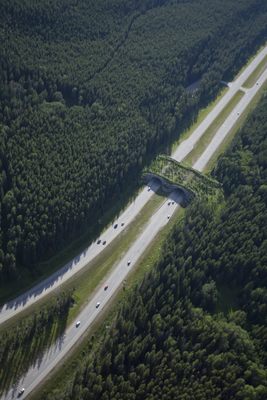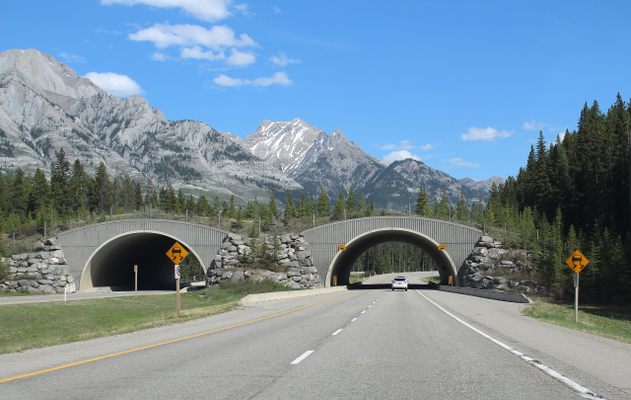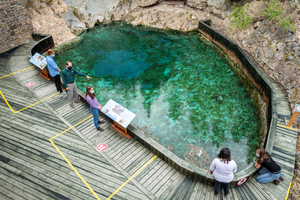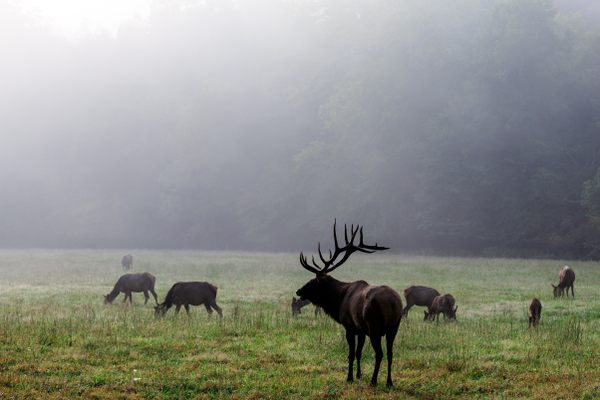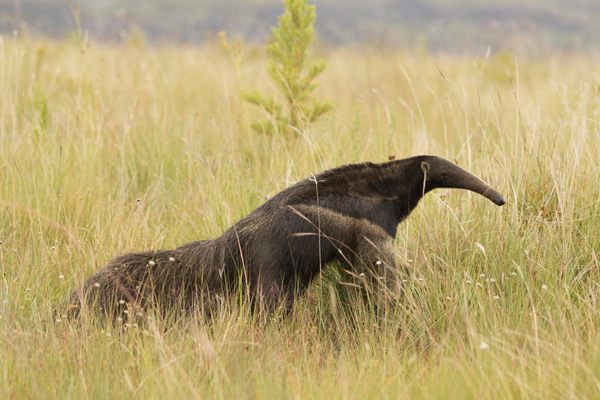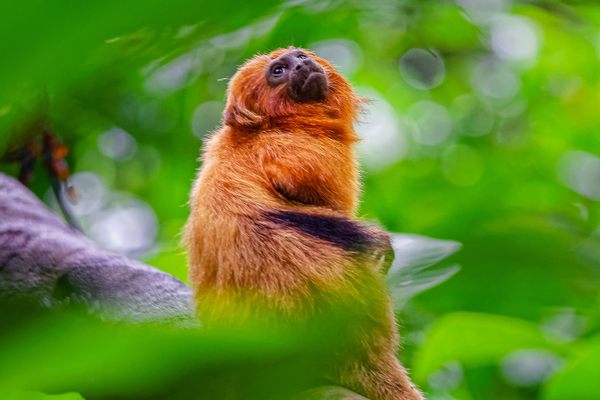About
As highway systems have grown in North America, collisions between wildlife and vehicles have become a massive problem. These accidents include animals of all sizes, from elk to snakes, and each one takes a toll on the environment. Not only can these collisions cause harm for both the driver and the animal, roadways that cut through animals’ natural habitats can also cut off migration routes. For over 20 years now, the solution in Banff National Park has been its wildlife crossings, several dozen bridges that help animals cross the Trans-Canada Highway.
The idea first came about in 1978. Overwhelmed with car traffic from the park, the Public Works department proposed splitting a section of the highway to create more space in the hopes of reducing congestion. But while the newly-twinned highway eased congestion, it only increased the risk of animals being hit while crossing the road. Enter the wildlife crossing. A series of over and underpasses offered a car-free route past the road.
Several underpasses were built in the 1980s, and the first overpasses were constructed in 1996-7. Today, over 88 kilometers (55 miles) of twinned Trans-Canada Highway in Banff and Yoho National Parks, there are now 48 crossing structures, including 41 underpasses, seven overpasses, and accompanying highway fencing throughout to keep wildlife off the road. The concrete tunnels arching over the highway look like pretty much any other bridge. But what motorists can’t see is the second highway right above the arches, a grassy bridge carrying the area’s wildlife safely across the roadway. Since their installation, the crossings have reduced collisions by 80 percent, with deer and elk seeing the greatest benefit with a reduction of 96 percent.
The crossings resemble grassy hilltops, dotted with trees and flowers. They arch over the highway and serve as a passageway for the area’s animals. Since those first crossings were built, scientists have studied the animal traffic, observing lynx, bears, beavers, and toads, among others. Data collected from the crossings has found that 13 large mammals species, from bears to cougars to bighorn sheep, have used the structures in Banff more than 200,000 times. A separate project to install 15 kilometers of highway fencing and nine wildlife underpasses on Highway 93 South in neighboring Kootenay National Park was completed in 2015.
These wildlife crossings have served as a model for other countries looking to protect wildlife as they expand roadways through vulnerable areas. Researchers from the U.S., China, and Argentina have visited the crossings hoping to gain insight for their own projects, each adapting it for their own needs. What was built to protect foxes and elk will, across the globe, be used to protect tapir in Belize, crabs in Australia, and grizzlies on the Flathead Reservation.
As researcher Tony Clevenger told Canadian Geographic on the 20th anniversary of the first crossings, “This is Canada’s biggest conservation success story—it’s the largest highway mitigation complex in the world.”
Related Tags
Know Before You Go
Many of the crossings are visible while driving on the Trans-Canada Highway. A current map of crossing locations is available here.
Community Contributors
Added By
Published
September 6, 2021
Sources
- https://www.canadiangeographic.ca/article/banffs-famed-wildlife-overpasses-turn-20-world-looks-canada-conservation-inspiration
- https://discoverapega.ca/stories/wildlife-crossings-key-to-highway-safety-in-banff/
- https://www.canadiangeographic.ca/article/banffs-famed-wildlife-overpasses-turn-20-world-looks-canada-conservation-inspiration
- https://www.theguardian.com/environment/2021/jan/23/how-wildlife-crossings-are-helping-reindeer-bears-and-even-crabs-aoe
